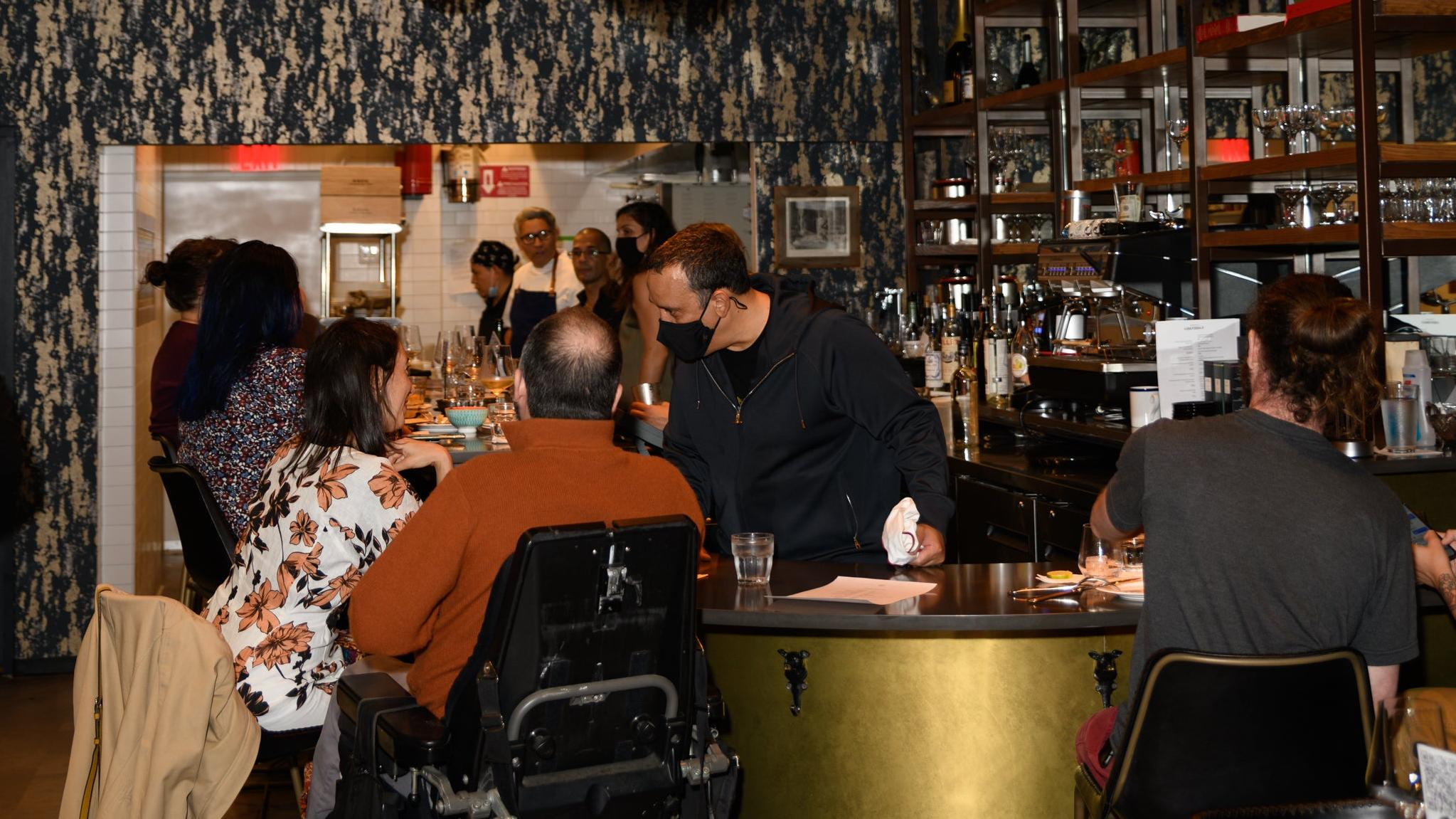Most Restaurants Aren't Designed For Diners With Disabilities, But One In NYC Is Changing The Game
Contento in NYC is designed by wheelchair users, for wheelchair users (and everyone else, too)
Half of the bar at Contento, a new restaurant in New York City, is lower than the rest of it. For wheelchair users, that means being able to order a drink at the bar more directly, facing the bartender without being obscured. Spaces between tables are wide enough for wheelchairs to pass through. QR codes on the menu allow cell phones to read items aloud to those with visual impairments. The bathroom is on the same level as the restaurant, instead of down a flight of stairs.
TODAY recently covered the design considerations put in place at Contento in order to make it a fully accessible restaurant to all, rather than considering accessibility as an afterthought or a retrofit, as is the case with many other establishments.
Business partners Yannick Benjamin and George Gallego, who both use wheelchairs, designed Contento with full accessibility in mind. Benjamin, paralyzed from the waist down due to a car accident at the age of 25, struggled to find restaurant work, an industry he loved, due to his wheelchair.
He recalled for TODAY an email thread about a job he applied to. "I actually saw an email that I was cc'd on by accident, where someone said to the director of HR, 'He's a nice guy, very talented, but he's in a wheelchair — it's not going to work.'"
Eventually Benjamin started working in a wine store, all the while thinking about opening his own restaurant, one that would be accessible to all. Though it's often easy for those without mobility issues to just get up and decide to go out to eat, a night out can be stressful or complicated for those with disabilities.
"If I call up a restaurant and ask if it's accessible and they say yes, then I get there and they've got to install a ramp and make a big deal out of it, or you need to be carried up, or they tell you the bathroom is accessible but then you get there and the bathroom has grab bars but maybe the actual doorway isn't wide enough (for a wheelchair)," he said. "That can be really deflating and incredibly embarrassing."
![Interior of Contento Restaurant in New York City [image provided by Contento]](5dc7f9f1141b773de914fa0b6a747ed2.jpg)
Then there is the lack of accessibility to those with visual impairments.
"Imagine being blind and you're on a date, meeting someone for the first time," said Benjamin. "You want to come across as independent as possible. You want to show that person how good you are at navigating around, but they don't have (a menu code). Or you're trying to build a business relationship or close an account with someone, and you've got to ask them to read the menu to you." So Benjamin took this into consideration and added QR codes to the menu that read the options aloud to the user. But the obstacles also boil down to human interaction and how diners are treated.
"Sometimes there's a lack of empathy," Benjamin said. "I always tell people that are in restaurants to please not rush people with disabilities, because they're constantly being rushed. And sometimes they work a little slower. It takes a little time for them to get ready. Give them a chance. You don't know what it took them to get to your restaurant, so show a little appreciation and show some patience."
Contento is setting a great example of how to build spaces so that everyone can enjoy themselves. It opened earlier this month, so if any of our readers go check it out, let us know how it went.
